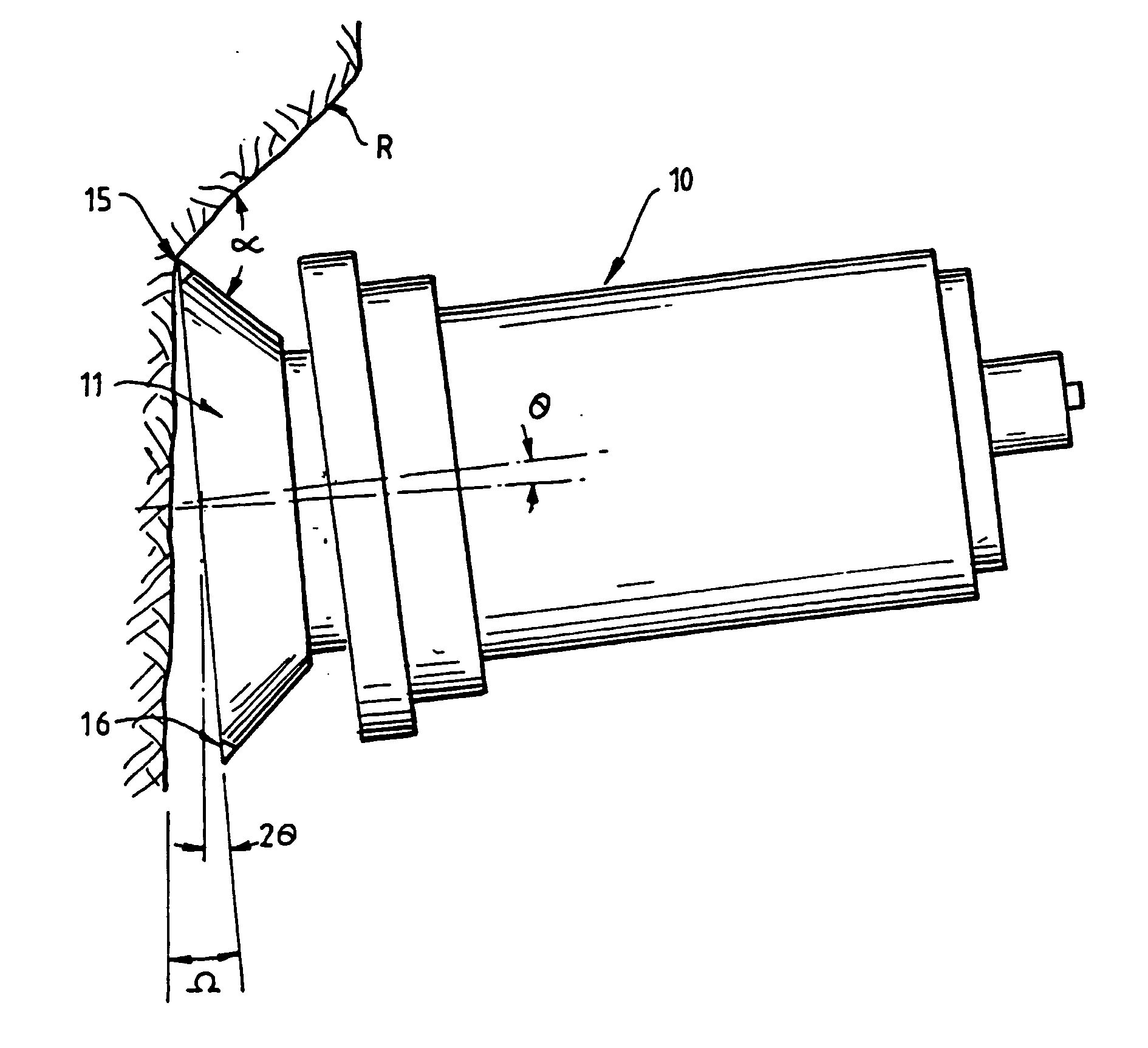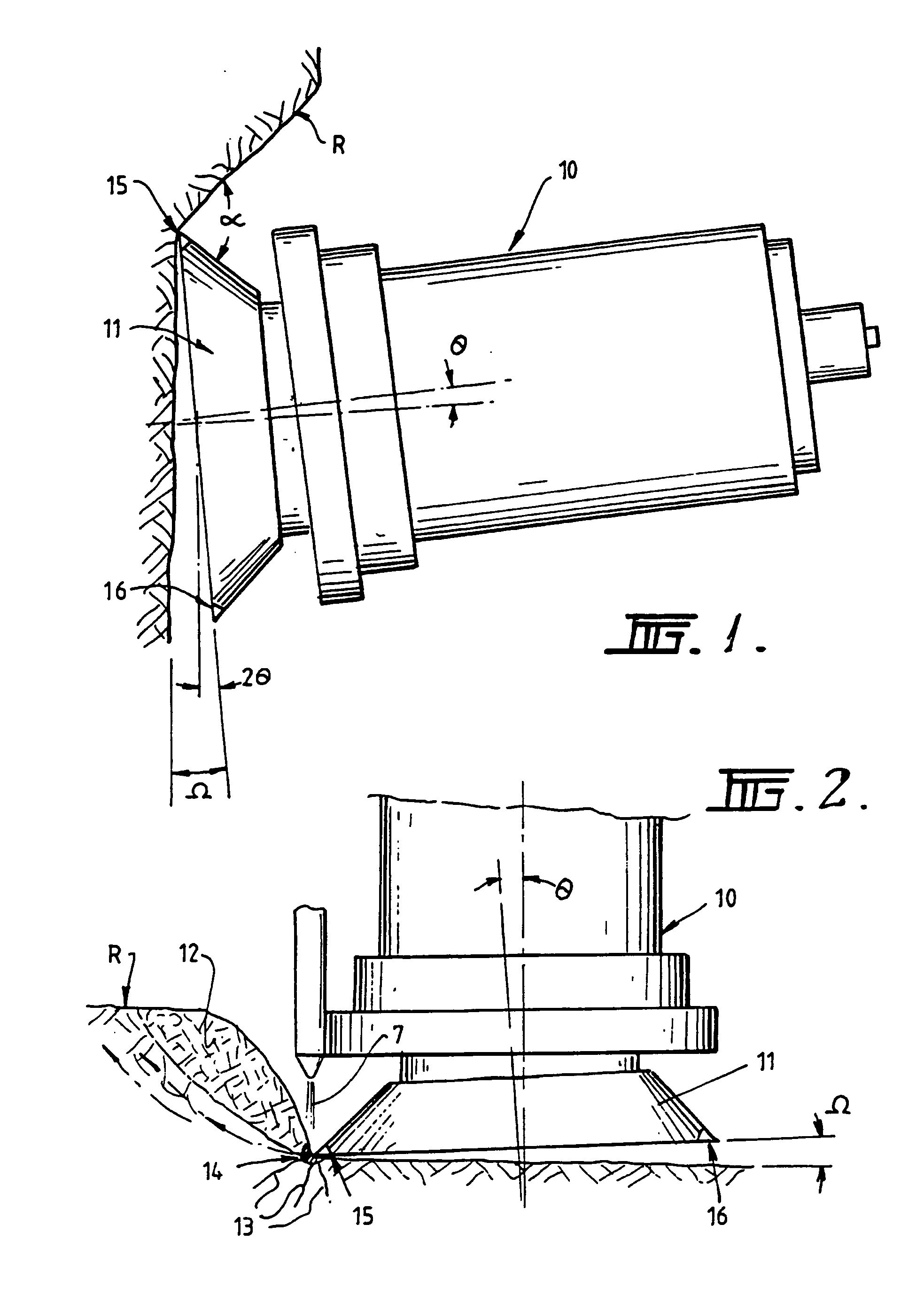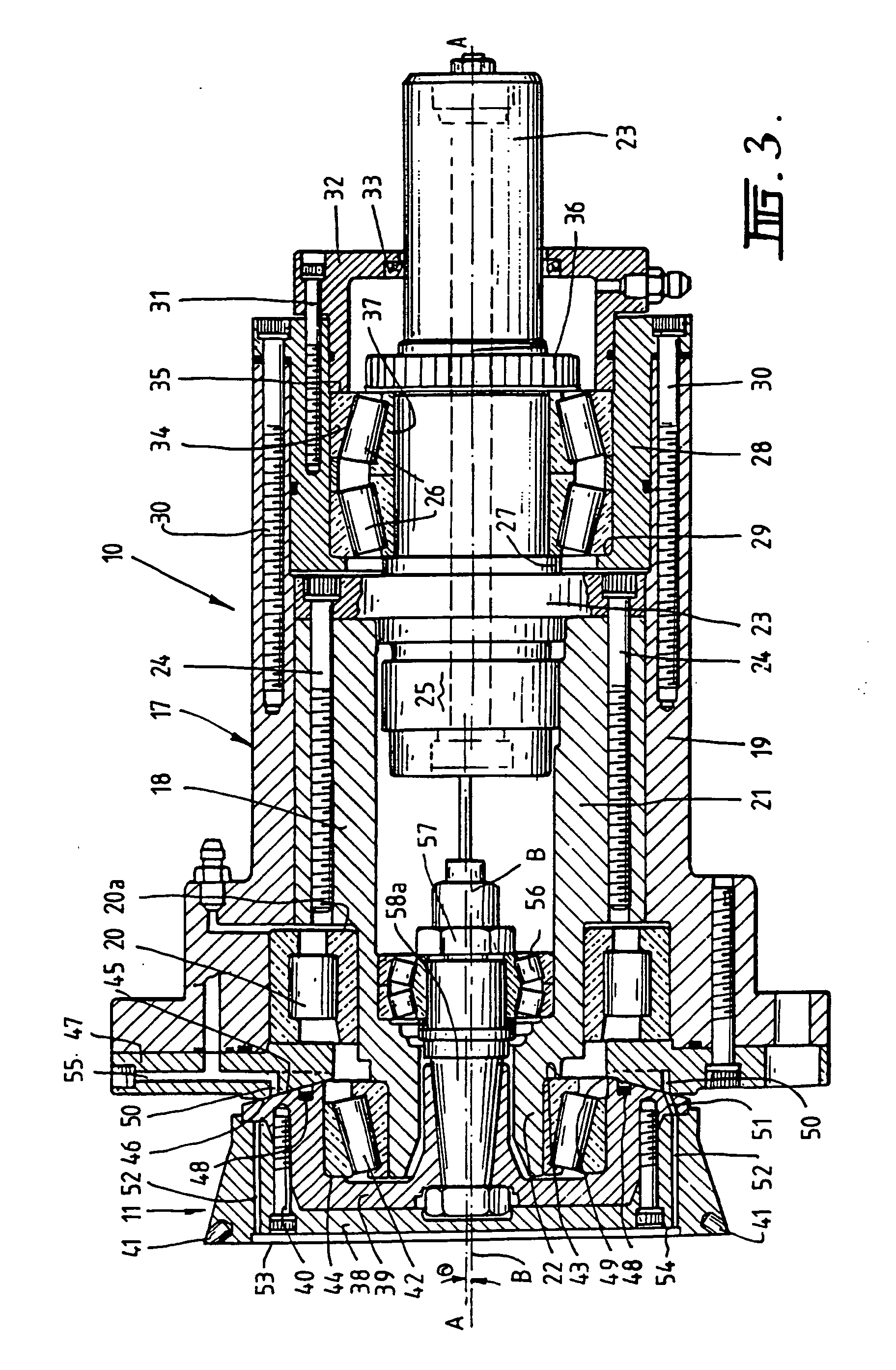Rock boring device
a boring device and rock technology, applied in the direction of earth drilling, cutting machines, mining structures, etc., can solve the problem of reducing the supporting structure mass of the proposed technology, and achieve the effect of reducing the supporting structure mass
- Summary
- Abstract
- Description
- Claims
- Application Information
AI Technical Summary
Benefits of technology
Problems solved by technology
Method used
Image
Examples
Embodiment Construction
[0015] With reference to FIGS. 1 and 2 of the drawings, the rock boring device 10 according to this preferred embodiment of the present invention includes a rotary disc cutter 11, that in use, is either inserted into a pilot opening formed in the rock face R, or approaches the rock face at an angle (α) to enable entry (see FIG. 1).
[0016] For this cutting action to be initiated the tip of the disc should initially contact the rock at significant angle. (Probably in excess of 45°, [α] but differing rock types or conditions may reduce or increase this requirement).
[0017] The boring device 10 is characterised in that the disc cutter 11 is driven in an oscillating manner, and also driven to nutate or is free to nutate. The disc cutter 11 is driven to move in this manner about separate or combined oscillating and nutating axes. The nutation angle (θ) may be varied or fixed from 0° to almost 90° (Most probably less than 5°). That motion, when applied to the rock face, will cause the disc...
PUM
 Login to View More
Login to View More Abstract
Description
Claims
Application Information
 Login to View More
Login to View More - R&D
- Intellectual Property
- Life Sciences
- Materials
- Tech Scout
- Unparalleled Data Quality
- Higher Quality Content
- 60% Fewer Hallucinations
Browse by: Latest US Patents, China's latest patents, Technical Efficacy Thesaurus, Application Domain, Technology Topic, Popular Technical Reports.
© 2025 PatSnap. All rights reserved.Legal|Privacy policy|Modern Slavery Act Transparency Statement|Sitemap|About US| Contact US: help@patsnap.com



